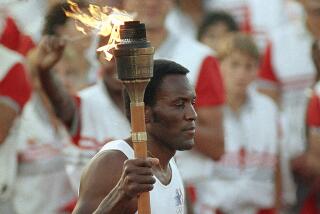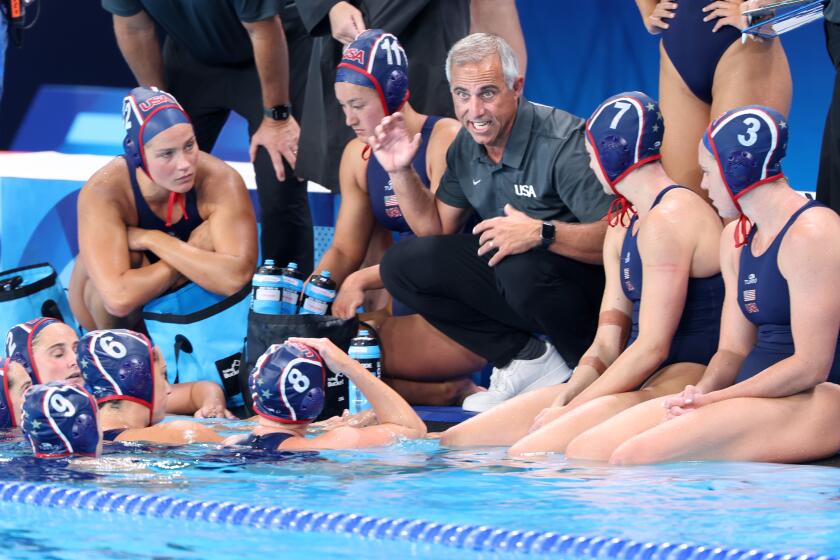India puts on a show with Commonwealth Games’ opening ceremony
When the Commonwealth Games kicked off here Sunday night, India relished the spectacle as an antidote to months of bad press over alleged corruption and mismanagement, including headlines about a collapsed footbridge, a tourist shooting and a filthy athletes’ village.
India has hoped to use the Games to showcase its booming economy and growing international clout in the same way China did with the 2008 Summer Olympics. But the many scandals in the run-up to the Games have left some worried that they would dent the nation’s stature rather than elevate it.
Some in the news media have dubbed them the “Shame Games.”
The opening ceremonies, however, showcased what the home of Bollywood does best: Grand spectacle, impressive song and dance routines, the exciting beat of drums, fireworks, lasers and giant dancing puppets, and depictions of India’s rich spiritual traditions. The images were broadcast simultaneously on a giant tethered “aerostat” balloon hovering low over the stadium.
“I was upset with all the news of corruption, and I was worried about what we were showing the world,” said Sharmila Singh, a teacher from Delhi. “But tonight I think we showed the world what we are capable of.”
The Games are a mini- Olympics conceived in the late 1920s as a way to tie members of the waning British Empire together and counter the growing U.S. dominance in sports. Dubbed the “friendly games,” 71 nations are represented. An estimated 7,000 athletes and officials expected to attend the events, which run through Oct. 14.
The athletes entered the stadium led by the Australian delegation, the hosts of the 2006 games. A high point was a journey featuring a model train that chugged around the Jawaharlal Nehru Stadium as depictions of India’s religions, regions, languages, passions and common men and women burst from its many carriages.
“This is so great,” said retired civil servant Rambhaj Singh, tears in his eyes. “We showed the world what we are. I have lived over 75 years, but never felt so proud.”
But the glitzy party, which reportedly cost $100 million to stage, also underscored enormous disparities in wealth and opportunities in the world’s largest democracy. Even as attendees paid up to $600 a ticket for the ceremony, well over a year’s salary for many Indians, residents of the Coolie Camp slum a few miles from the stadium seethed.
“Only rich people who live in fancy bungalows can attend these games,” said Dolly Peter, who watched the opening ceremonies on a small television in a tiny dwelling with a low roof made of sticks and palm fronds. “We can’t even step out to carry water home without being harassed by all the security people.”
The city has resembled a fortress in recent days, with police and troops perched on building tops, along roads and on balconies, especially near the main stadium. Many shops and businesses were closed Sunday, reportedly at the urging of the government, while cars were forced to navigate a gantlet of security barriers.
Three hours before the start of the opening ceremony, massive lines of people waited patiently outside the stadium to be patted down and pass through metal detectors. The long list of restricted items included coins, banners and flashlights. Even rolled-up paper was subject to seizure.
All flights over the capital were halted for several hours, and there were restrictions on television coverage. After the Mumbai terrorist attack in late 2008 that killed more than 160 people, India came under criticism for live 24/7 coverage that allowed terrorists to react in real time.
Delays in preparations had caused consternation since India won the bid to host the Games back in 2003. In the final week of frantic preparations, three snakes were found around the athletes’ lodgings and in a tennis court, which sent organizers scurrying for a snake catcher.
There was also a large dose of heroics. The capital had been a mess of trenches, water-filled holes and dust, but its appearance improved markedly in the final days as heavy monsoon rains ebbed and workers rushed to complete their work.
And after the embarrassing collapse of a footbridge leading into the main stadium in late September that injured 19 workers — and the nation’s pride — the army managed to rebuild it within five days.
Ram Singh, a student at Delhi University, said India may not do things as precisely as the Chinese, “but we do things beautifully. I have never seen something so beautiful in my life as this ceremony.”
mark.magnier@latimes.com
More to Read
Go beyond the scoreboard
Get the latest on L.A.'s teams in the daily Sports Report newsletter.
You may occasionally receive promotional content from the Los Angeles Times.





